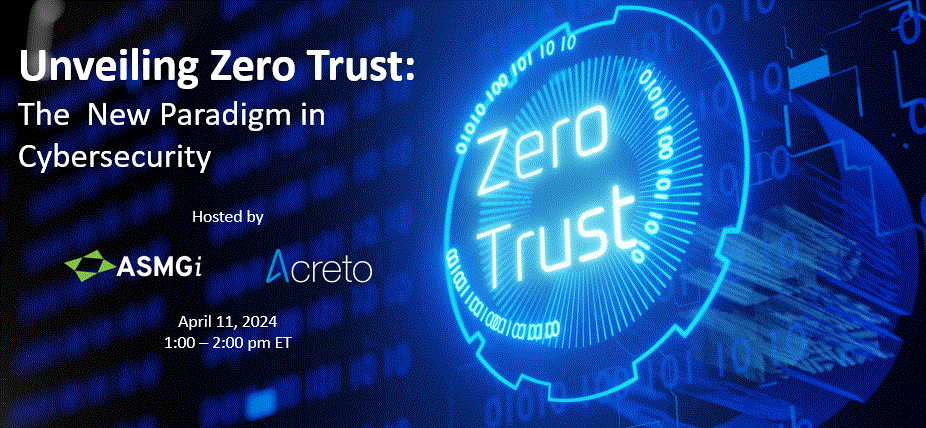Zero Trust: A Paradigm Shift in Cybersecurity
POSTED BY ASMGi ON April 30, 2024
In the realm of cybersecurity, traditional approaches often revolved around perimeter defense—establishing a barrier around the network to keep potential threats out. However, the evolving landscape of cyber threats demands a more proactive and dynamic strategy. This is where the concept of Zero Trust comes into play, representing a fundamental shift in how organizations approach security.
What is Zero Trust?
Zero Trust is a security model that challenges the conventional notion of “trust but verify.” Instead, it operates on the principle of “never trust, always verify.” The core idea is simple yet revolutionary: no entity—whether inside or outside the network—is inherently trusted. Every access request, regardless of its source, must be authenticated, authorized, and continuously validated before granting access to resources.
Key Principles of Zero Trust
Verification: Zero Trust requires strict verification of identity and context for every access attempt. This includes user identity, device security posture, location, and other relevant parameters.
Least Privilege: Access privileges are granted on a need-to-know basis. Users and devices are granted only the minimum level of access required to perform their tasks.
Microsegmentation: Networks are divided into smaller segments, and strict access controls are implemented between these segments. This limits lateral movement in case of a breach.
Continuous Monitoring: Zero Trust is not a one-time authentication process. It involves continuous monitoring of user behavior, device status, and network traffic to detect anomalies or suspicious activities.
Why Zero Trust Matters
The traditional perimeter-based approach has become less effective against sophisticated cyber threats, such as insider attacks, advanced persistent threats (APTs), and ransomware. Zero Trust addresses these challenges by assuming that attackers may already be inside the network, thereby focusing on protecting the data and resources themselves rather than the perimeter.
By adopting Zero Trust principles, organizations can:
Enhance Security Posture: Zero Trust reduces the attack surface by implementing strict controls and continuous monitoring, making it harder for adversaries to move laterally within the network.
Improve Compliance: Many regulatory frameworks, such as GDPR and HIPAA, emphasize the need for granular access controls and data protection. Zero Trust helps organizations meet these compliance requirements effectively.
Enable Secure Remote Access: With the rise of remote work, Zero Trust provides a robust framework for securing access to corporate resources from any location and any device without compromising security.
Challenges and Considerations
Implementing Zero Trust is not without its challenges:
Complexity: Transitioning from a traditional security model to Zero Trust requires significant planning, technology investments, and cultural changes within the organization.
User Experience: Strict access controls can sometimes hinder user productivity if not implemented thoughtfully. Balancing security with user experience is crucial.
Integration: Zero Trust involves integrating various security technologies, such as identity and access management (IAM), endpoint security, network segmentation, and analytics platforms.
The Path Forward
Despite the challenges, Zero Trust represents the future of cybersecurity. As organizations continue to grapple with evolving threats and compliance requirements, embracing Zero Trust principles can significantly strengthen their security posture and adaptability.
In conclusion, Zero Trust is not merely a technology or a product but a holistic security philosophy that emphasizes continuous verification, strict access controls, and data-centric security. By adopting Zero Trust, organizations can proactively defend against modern cyber threats and safeguard their most critical assets in an increasingly interconnected world.
